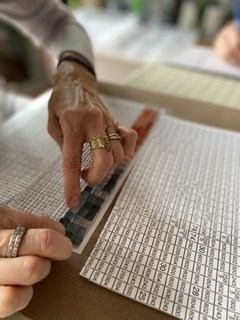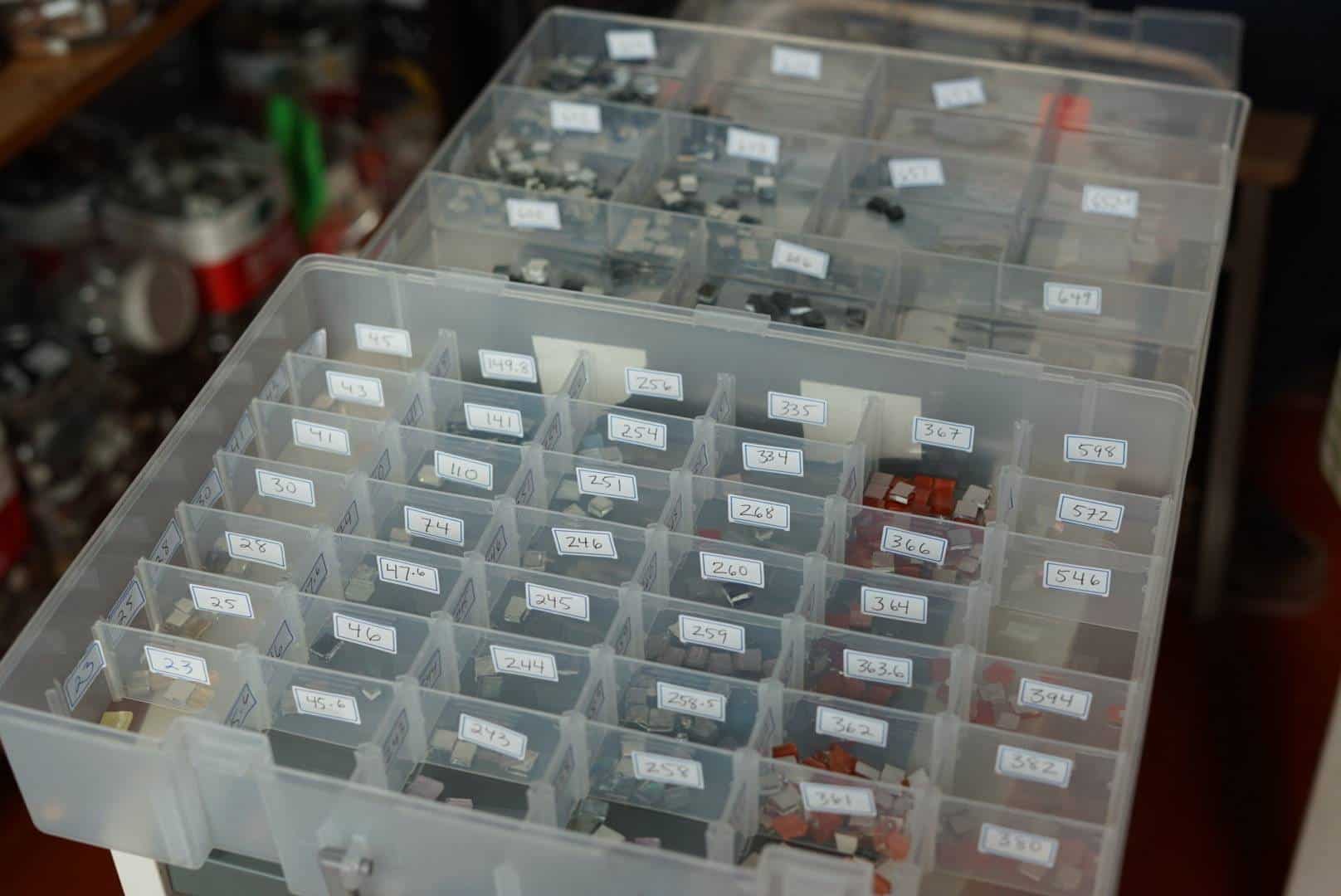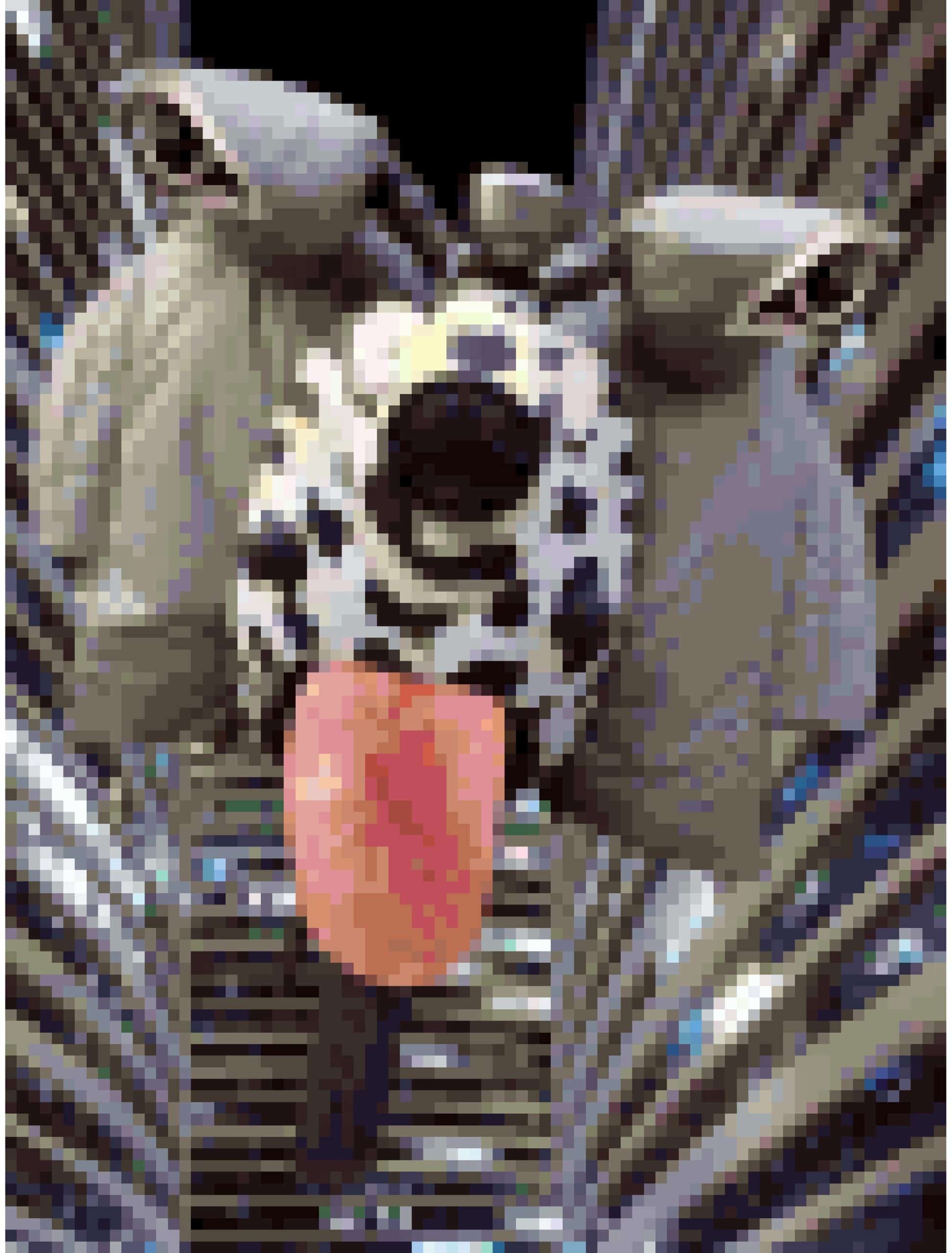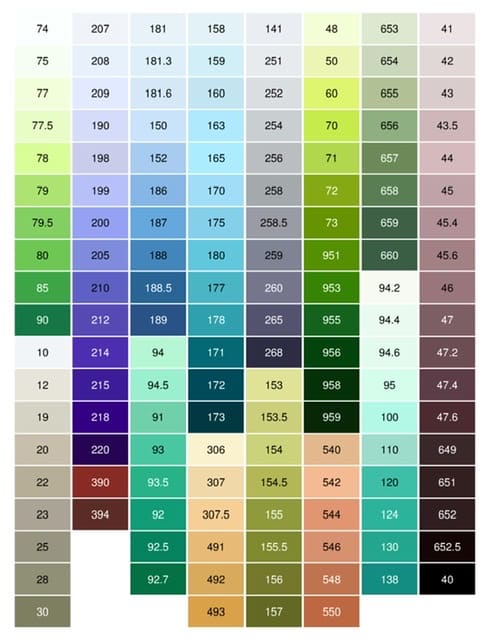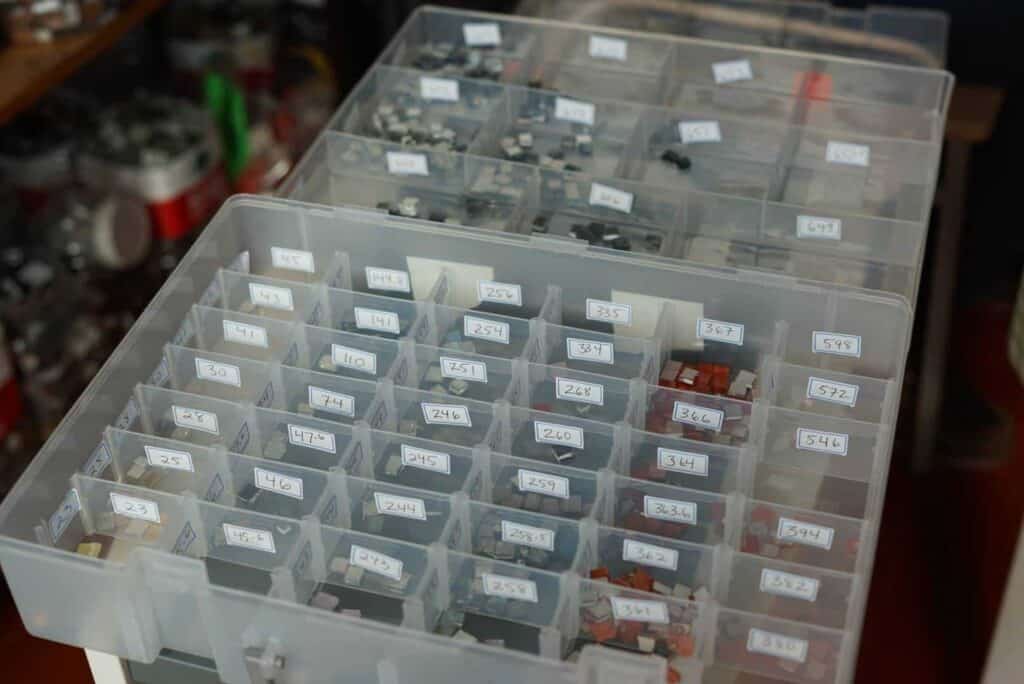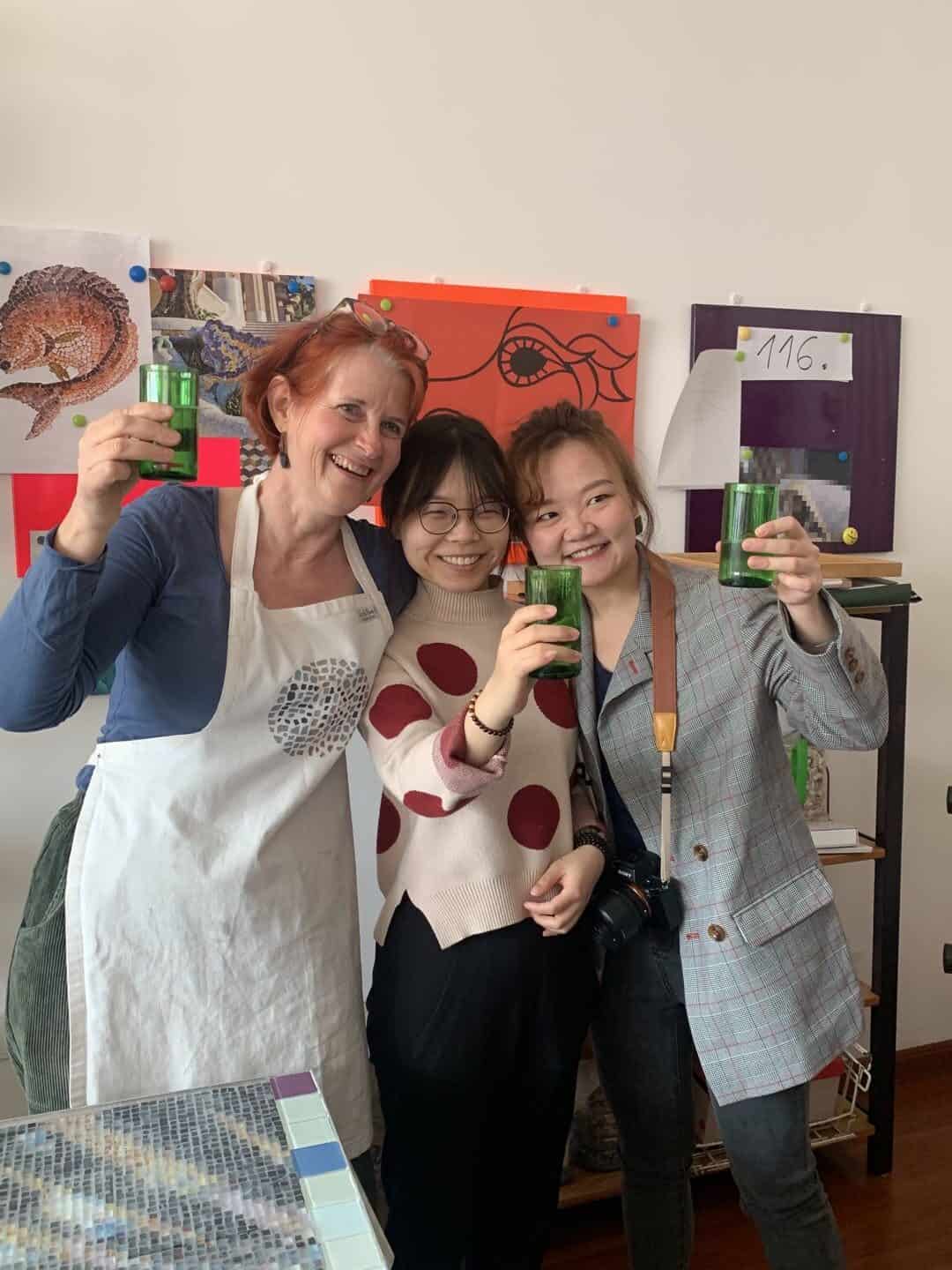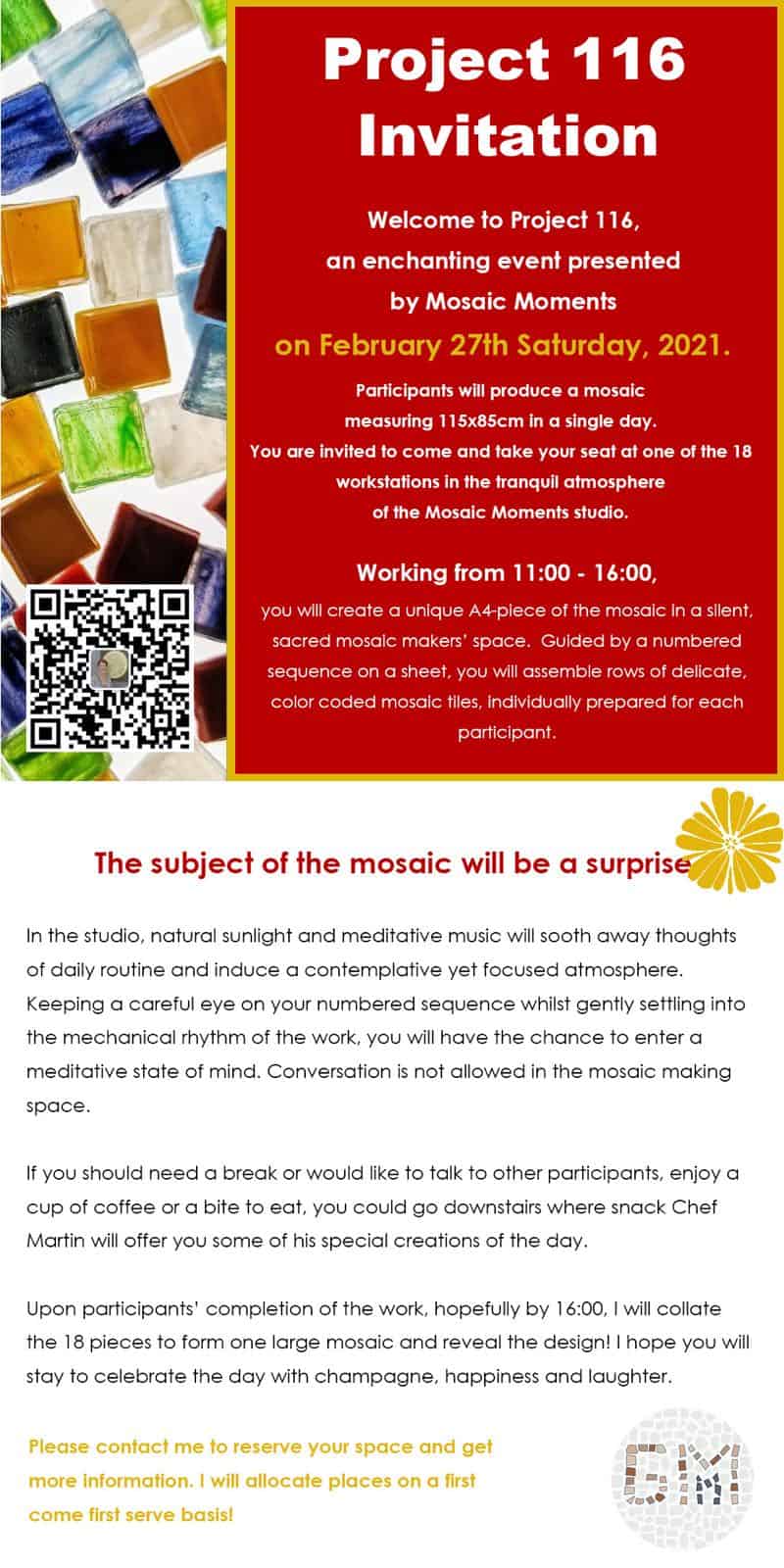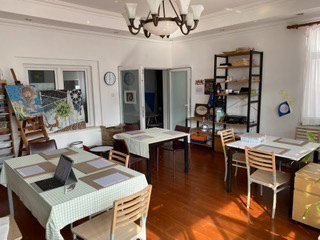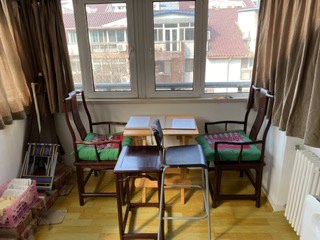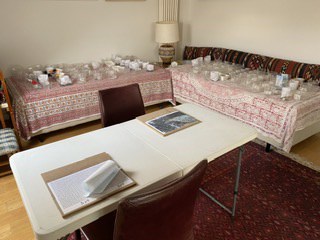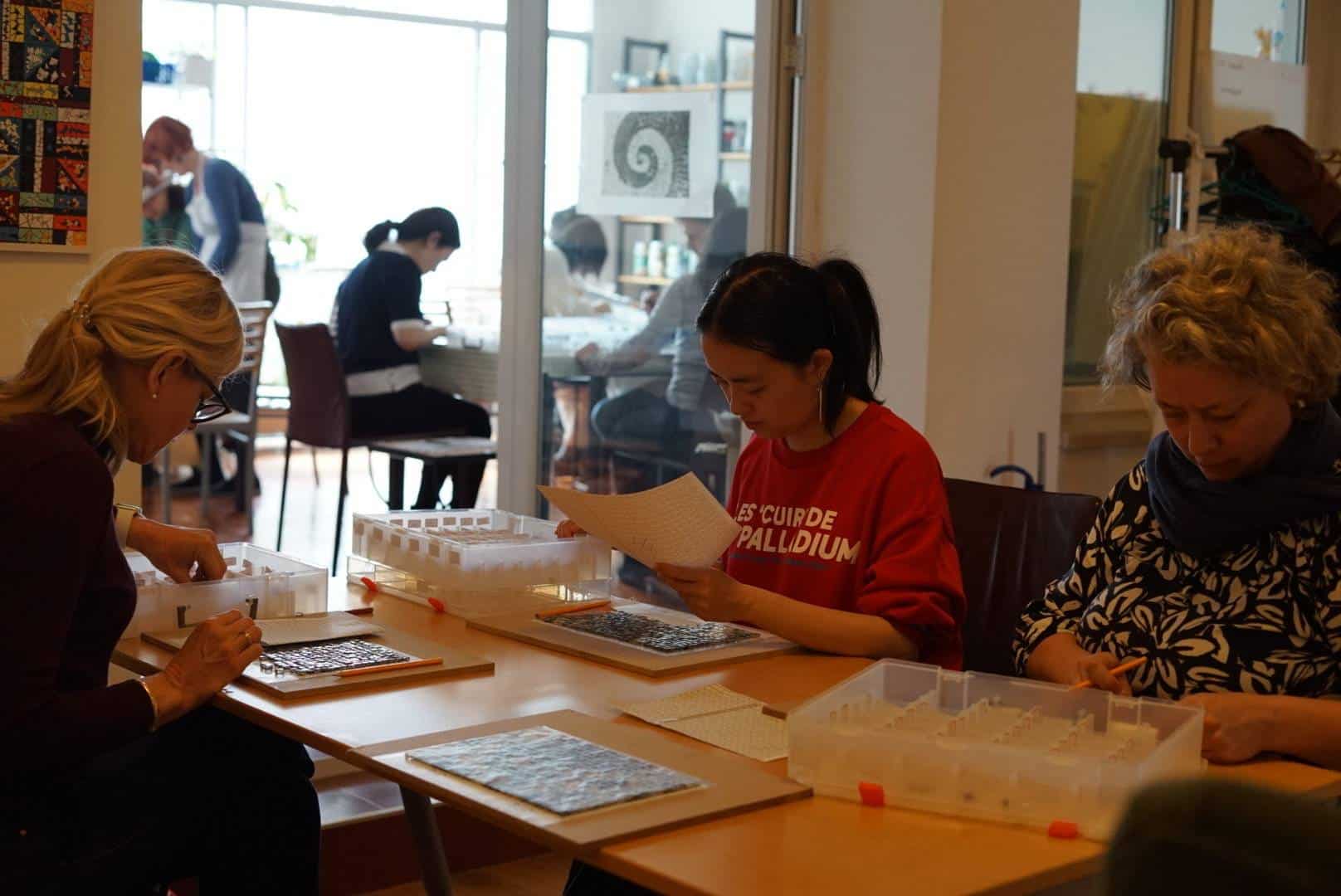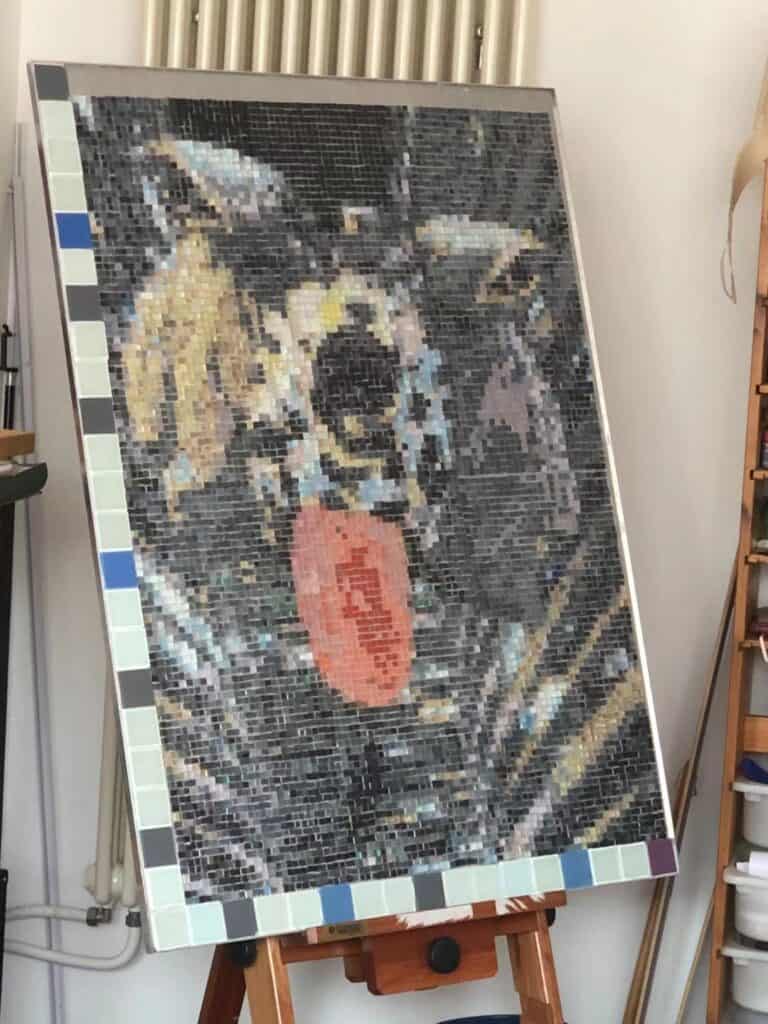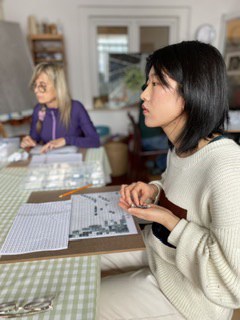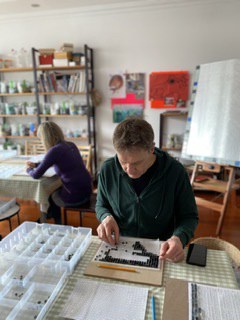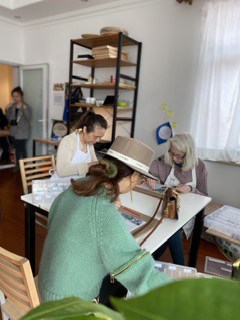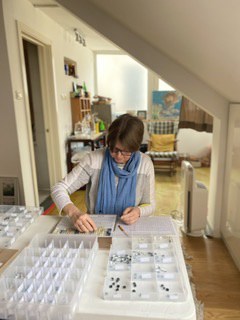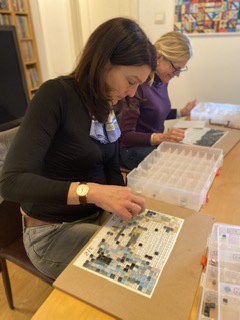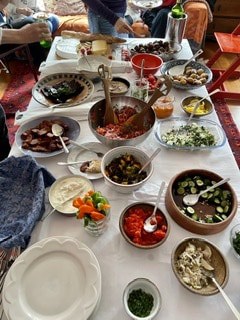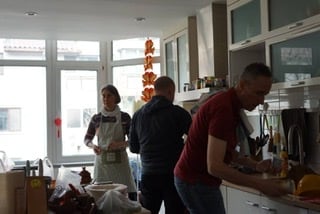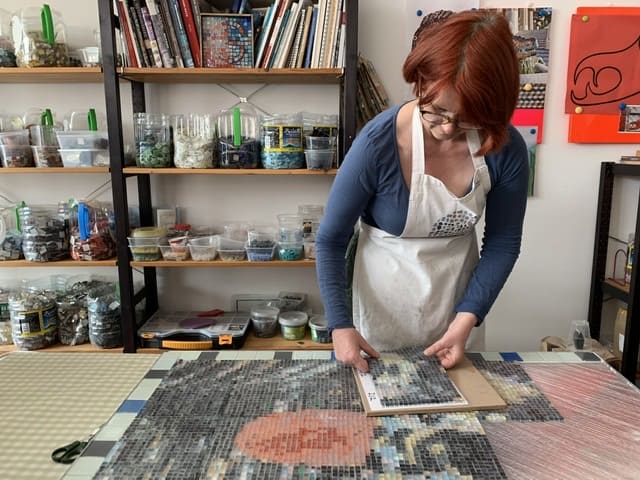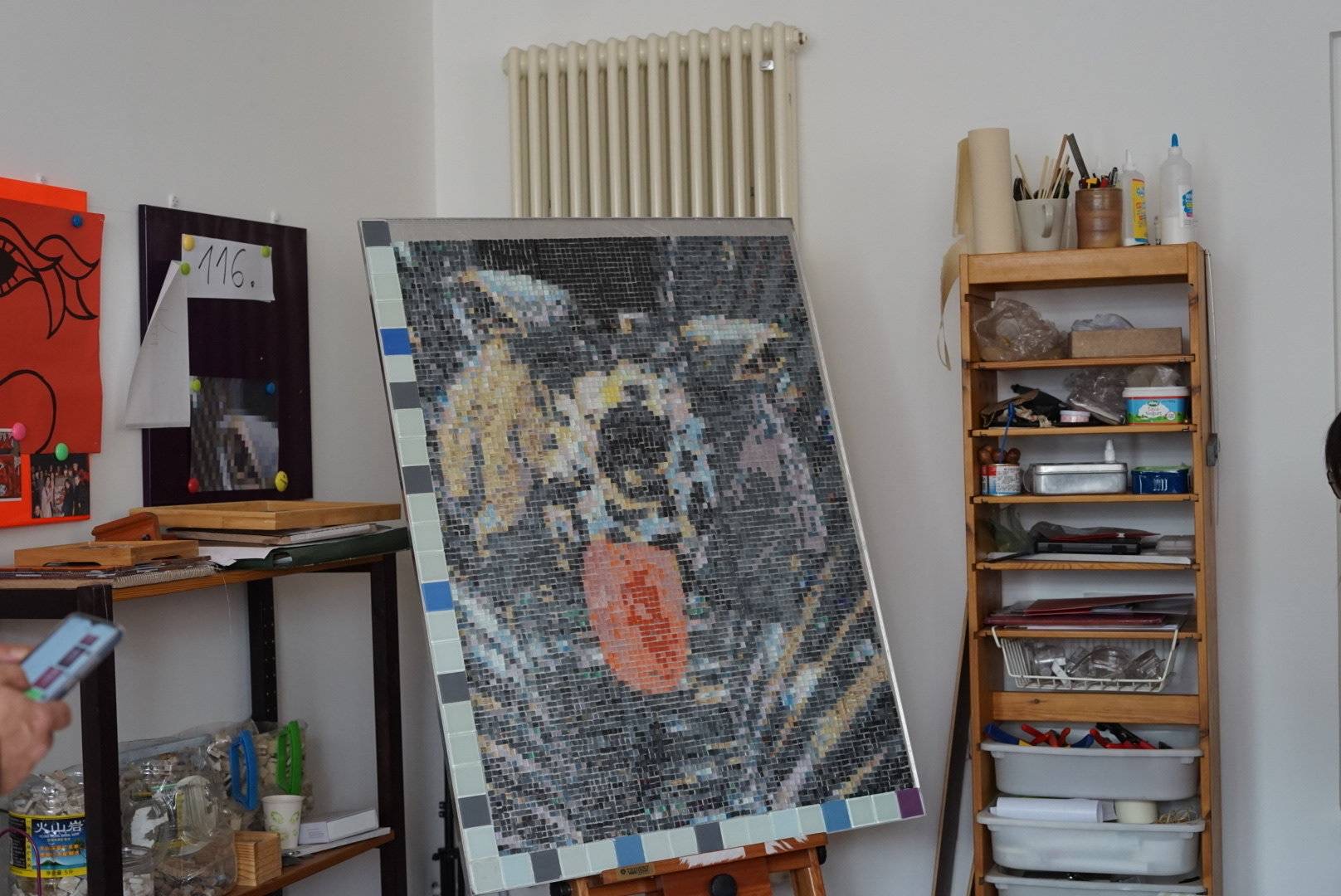Is it an owl? Is it a bear? It’s a Beijing moto!
What would you expect a group of seasoned Beijingers to be doing on a sunny Saturday afternoon? At Mosaic Moments studio, a banker, a baker, a jewelry maker… and a few other friends met to assemble a much talked-about mosaic made up of 5000 colored glass tiles and in so doing slowly revealed it’s secret motif – a familiar icon on the streets of Beijing.
For the mosaic master, Gertrud Müller, the suspense was heightened by not knowing whether the new photographic pixel technique she was experimenting with would produce a clearly recognizable motif. “My greatest challenge was to see if the image will emerge using linear andamento (rows of tiles) instead of the sculpted lines of classical mosaic,” Müller said.
The photographic pixel technique is a recent innovation by contemporary German artist Thomas Denker. He designed a computer program to render a digital photograph as color-coded pixels that correspond to the color chart of a well-known tesserae (mosaic tile) factory in Italy. Located in Beijing, things are not always straightforward. “I’d decided to use only local material and of course, the tiles available here are not an exact match for those in Italy. It was quite a task to find the right match!”
With Denker’s help Müller transformed a photo collage of her motif into 18 worksheets that made up the bigger mosaic. Müller and her team prepared an individual material kit for each worksheet to ensure the final outcome would resemble the original photo collage as closely as possible. “So, it was quite unexpected that although the worksheets limited creativity to some extent, people still found individual ways of approaching their work, task,” Müller said.
On the big day, the mosaic makers immersed themselves in a silent, contemplative work mode. Thoughts of daily routine quickly faded, and they all became captivated by the emerging, yet abstract shapes in front of them. After three hours of focused work and a hearty lunch prepared by snack chef Martin Raiser, the mosaic master had reason to smile. As she assembled the worksheets one-by-one and the race to guess the icon became rowdy, it all finally fell into place: The infamous Beijing motorcycle dressed in winter gear! (text Annalize Heyns)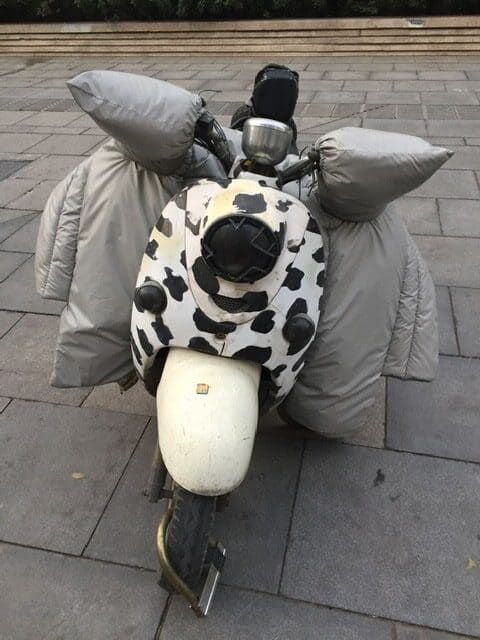
Making of the infamous Beijing motorcycle dressed in winter gear - click on the photo!
